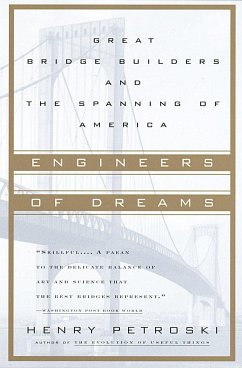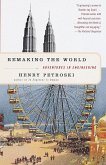Petroski reveals the science and engineering--not to mention the politics, egotism, and sheer magic--behind America's great bridges, particularly those constructed during the great bridge-building era starting in the 1870s and continuing through the 1930s. It is the story of the men and women who built the St. Louis, the George Washington, and the Golden Gate bridges, drawing not only on their mastery of numbers but on their gifts for persuasion and self-promotion. It is an account of triumphs and ignominious disasters (including the Tacoma Narrows Bridge, which literally twisted itself apart in a high wind). And throughout this grandly engaging book, Petroski lets us see how bridges became the "symbols and souls" of our civilization, as well as testaments to their builders' vision, ingenuity, and perseverance. "Seamlessly linked...With astonishing scope and generosity of view, Mr. Petroski places the tradition of American bridge-building in perspective."--New York Times Book Review
Hinweis: Dieser Artikel kann nur an eine deutsche Lieferadresse ausgeliefert werden.
Hinweis: Dieser Artikel kann nur an eine deutsche Lieferadresse ausgeliefert werden.






![The Quebec Bridge [microform]: Notes on the Work of the St. Lawrence Bridge Company, in Preparing the Accepted Design for the Construction of the Sup The Quebec Bridge [microform]: Notes on the Work of the St. Lawrence Bridge Company, in Preparing the Accepted Design for the Construction of the Sup](https://bilder.buecher.de/produkte/65/65553/65553913m.jpg)

